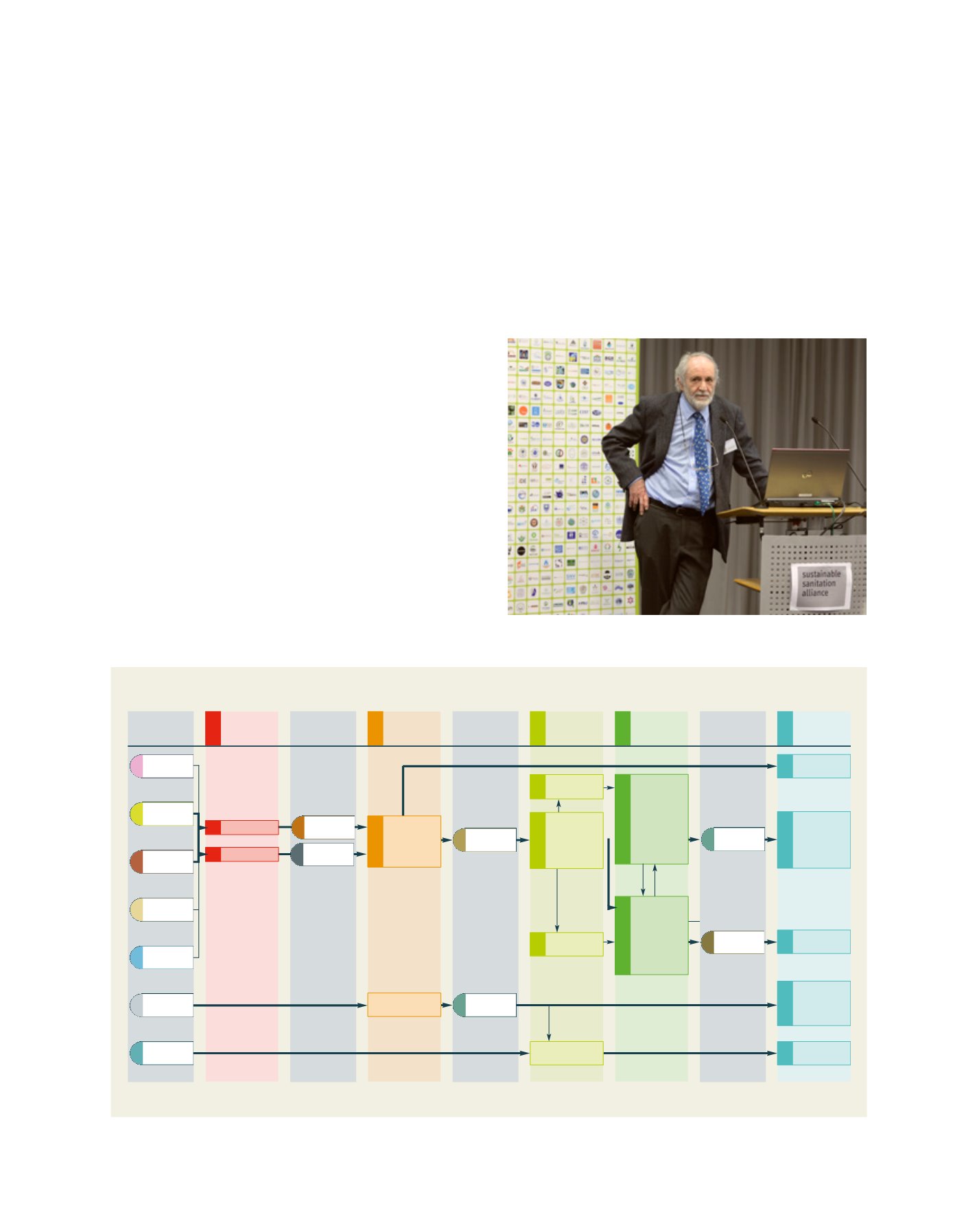

[
] 42
A B
et ter
W
or ld
SFD reports contribute to better diagnostics and more
targeted intervention at city level. For the report to be of most
value, it must comprise the graphic together with a detailed
set of critical information on the sanitation service delivery
context of a city and a transparent reference to all data sources
used, otherwise sustainable solutions cannot be achieved. For
example, there are cities that have received funds for more
than one large wastewater treatment plant which became
dysfunctional after a few months. Investment in a large
plant is a bad idea if skilled personal are not in place to run
and maintain it, or if the appropriate policy environment to
finance the operational and maintenance costs is missing.
Presenting an SFD graphic to a key decision maker often
sets the appropriate tone for productive discourse, initiating
it by providing a clear and common ground. There are various
backgrounds against which such discussion can take place.
For instance, in Moshi, Tanzania, four key stakeholders of
urban sanitation used the city’s SFD
5
as a starting point to
help develop a joint understanding of the status quo and to
inform discussion on possible futures for the city. In India,
the SFD has been integrated in the ministry’s toolkit for
implementing the already effective National Urban Sanitation
Policy, strengthening communication among experts as well
as providing information for the public.
In summary, an SFD not only presents relevant informa-
tion visually to more than one sector but, by doing so, brings
together the various sectors and their respective agendas.
Thus, various stakeholders are linked in communication that
otherwise would have remained within their own field of
discourse. The SFD is therefore responsible for shaping a
new, more encompassing conversation on sanitation.
Two other strong visual concepts required for SFDs
While the idea of the graphic quickly emerged in discussions
between experts, the underlying thinking was predicated on
two main pillars
6,7
that also evolved around iconography.
One is the systems approach to sanitation that defines the
components forming a typical system and produces a set of
examples. The other is the idea of sanitation as part of a circu-
lar economy. It is possible close the loop on sanitation, linking
excreta management with broader resource efficiency and
sustainability discussions and hence with a range of SDGs.
8
Both approaches connect sanitation with matter flow analysis
and are discussed below.
C
Conveyance
Input/Output
Products
Faecal Sludge
C.7
S.2
ngle Pit
S.3
Single Pit VIP
C.8
Sewer
Emptying &
Transport
C.3
MotorizedEmpty-
Excreta
U
User Interface
S
Collection
and Storage/
Treatment
C
Conveyance
T
(Semi-)
Centralized
Treatment
D
Use and/or
Disposal
Input/Output
Products
Input
Products
Input/Output
Products
Input/Output
Products
Faeces
Anal Cleansing
Water
Stormwater
Effluent
Greywater Treatment
D.1
Fill and Cover
D.5
Irrigation
D.8
Aquaculture
D.9
Macrophyte
D.10
Disposal/
Recharge
D.5
Irrigation
D.6
Soak Pit
D.10
Disposal/
Recharge
D.10
Disposal/
Recharge
Faecal Sludge
Urine
D.11
Land Application
D.12
Surface Disposal
Stormwater Drains
Dry Cleansing
Material
U.1
Dry Toilet
C.7
Transfer Station
S.2
Single Pit
S.3
Single Pit VIP
T.3
WSP
T.4
Aerated Pond
T.5
FWS CW
T.6
HSF CW
T.7
VF CW
T.8
Trickling Filter
T.9
UASB
T.10
Activated Sludge
T.11
Sedimentation/
Thickening
T.12
Unplanted drying
beds
T.13
Planteddryingbeds
T.14
Co-Composting
T.15
Biogas Reactor
Treated Sludge
C.8
Sewer Discharge
Station
Effluent
Flushwater
Greywater
C.2
Human Powered
Emptying &
Transport
C.3
MotorizedEmpty-
ing & Transport
Excreta
Blackwater
U.4
Pour Flush Toilet
The systems approach to sustainable sanitation for a single pit system. This method has found widespread acceptance in the sector
See reference 12: Tilley, E., Lüthi, C., Morel, A., Zurbrügg, C., & Schertenleib, R., 2008. Compendium of Sanitation Systems and Technologies. Swiss Federal Institute of Aquatic Science and Technology (Eawag), Dübendorf, Switzerland
Roland Schertenleib, former director of the Swiss Institute for Water Research,
was a key figure to argue for a global systems approach to sanitation
Fig 2: Combining sanitation system components to form sets of systems along a sanitation chain
Image: SuSanA/GIZ
















